Linux File Permissions Chmod

How To Change Directory Permissions In Linux Pluralsight

Linux Users And Groups Linode

How To Change Directory Permissions In Linux Pluralsight

An Introduction To Linux File Permissions Boolean World

Chmod 777 What Does This Mean Learn Linux Permissions Easy Way

Linux File Permissions Know The Reason Behind That Chmod 777 By Abhishek Chandra Medium
Just select the appropriate permissions and it will tell you the permissions in both absolute and symbolic mode.
.png)
Linux file permissions chmod. Chown – change ownership. The permission scheme described above also applies to directories. There are two ways to use chmod — the symbolic mode and the absolute mode.
Understand how Ubuntu / Linux file permissions and special mode bits work. To recursively operate on all files and directories under a given directory, use the chmod command with the -R, (--recursive) option. On Unix-like operating systems, a set of flags associated with each file determines who can access that file, and how they can access it.
The chmod command is used to alter the permissions of a file. Chmod codes cheat sheet. The main difference between access rights for files and directories is that the x permission on a file grants permission to execute it, where on a directory, it grants permission to enter it.
The default umask value is subtracted from the overall file/directory default value. In this article, I will take you through 11 Popular Unix/Linux chmod command examples to Change File Permissions. We have already described the Linux file permissions.
Changing File Permissions – Oracle. Linux chmod command is used to change the access permissions of files and directories. How To Change File Permissions In Linux Using ‘chmod’ Command.
Chmod Command in Linux Linux File Permission Introduction to Linux File Permission. Useful chmod cheatsheets and reading:. Chown – change file owner and group.
The chmod command allows you to change the permissions on a file using either a symbolic or. It allows the permissions to be changed in either Symbolic form or in numerical form. Each file on the Linux systems bears a set of permissions.
To change directory permissions in Linux, use the following:. Permissions used to be called mode of access and hence chmod was the short form of change the mode of access. Every file in the Linux / macOS Operating Systems (and UNIX systems in general) have 3 permissions.
For example, to add execute permissions for the owner of a file you would run:. Do we still need human…. Browse other questions tagged linux permissions chmod or ask your own question.
The permissions control the actions that can be performed on the file or directory. Let’s say we want to change Linux file permissions from -rwxrw-rw-to -rwx-r–r–. Linux can also be used in mainframes and servers without any modifications.
Use --no-preserve-root to override this failsafe Linux Permissions Syntax. The chmod command allows you to change the permissions of files using symbolic or numeric mode. There are two ways to use the chmod command:.
% chmod -v 640 myfile.txt mode of `myfile.txt' changed to 0640 (rw-r-----). When you wish to set the mode of a file (set the permissions) you use the UNIX command chmod at the system prompt. Chmod 755 -R /opt/lampp/htdocs will recursively set the permissions.
As you become familiar with the chmod command, try using the -v option for a verbose response as in the following example:. To determine the mode (or permission settings) of a particular file, use the command `ls -lg filename'. You can use chmod command for changing the permissions on a file in Linux.
Read permissions identified by ‘r‘ Write permissions identified by ‘w‘ Execute permissions identified by ‘x‘ To check the file permissions of any file, use the ls command and the -l option. It stands for change mode. Chmod +x filename to allow executable permissions.
If you need to change a file permission, use the chmod command. Both forms can be interchangeably used. So if the executable permission of chmod is removed, you can't assign the permissions to any programs, including the chmod command itself.
Linux file permission is a very important aspects in terms of security issues for the system administrator of Linux Operating System. The chmod() function shall change S_ISUID, S_ISGID, S_ISVTX, and the file permission bits of the file named by the pathname pointed to by the path argument to the corresponding bits in the mode argument. How to Use chmod Command.
Transferring Ownership with chown. Change permission on all the files in a directory recursively. To change file and directory permissions, use the command chmod (change mode).
If you want an easy way to know the Linux file permission in numeric or symbolic mode, you can use this chmod calculator. The weird strings you see on each file line, like drwxr-xr-x, define the permissions of the file or folder. Users can simply modify file permissions using the chmod (change mode) command.
Even, it ignores the symbolic links come across recursive directory traversal. How to Set File Permissions Using `chmod' Files. The user file-creation mode mask (umask) is use to determine the file permission for newly created files.
In Linux systems, every file is associated with group ownership and an owner. There's no way to set the permissions for files automatically in only this directory that are created after you set the permissions, but you could change your system-wide default file permissions with by setting umask 022. Chmod (this Tutorial's subject) and chown are designed to be able to change the defaults of user access as part of a secure plan by the Administrator, as well as, in the case of chown, modifying downloaded files to make them executable.
The request is filtered by the umask.The name is an abbreviation of change mode. Select the permissions you require below. Learn how to change these permissions using the chmod command.
Simply enter this line:. There are 3 permission types that are associated with a file. To assign reasonably secure permissions to files and folders/directories, it's common to give files a permission of 644, and directories a 755 permission, since chmod -R assigns to both.
Running chmod 770 on project-a gives us the permission set we want:. The application shall ensure that the effective user ID of the process matches the owner of the file or the process has appropriate privileges in order to do this. Chmod is a great Linux command for manipulating file and directory permissions.
But this raises security concerns as an unsolicited or malign user can corrupt, change or remove crucial data. The general syntax to recursively change the file’s permissions is as follows:. Rwxrwx--- How does 770 correspond to rwxrwx---?.
Chmod is a command in Linux and other Unix-like operating systems that allows to ch ange the permissions (or access mod e) of a file or directory. In this article, you will learn how to change permissions of any file or directory with chmod command. Chmod is used to make changes:.
To meet our goal, we will run:. File permission can be represented in a symbolic or numeric (octal) format. If you need to list a file's permissions, use the ls command.
It can be used to control the default file permission for new files. It is dangerous to operate recursively on '/' chmod:. In Linux, you can easily change the file permissions by right-clicking the file or folder and select “Properties”.
Chmod -R MODE DIRECTORY. The Overflow Blog Neural networks could help computers code themselves:. File permissions in Linux file system are managed in three distinct user classes:.
One set for the owner of the file, another set for the members of the file’s group, and a final set for everyone else. Neither command is difficult to use. You can configure your file permissions inside of your Windows drives using the mount options in wsl.
The name speaks for itself. As you might remember, the default file permission value is 0644, and the default directory’s is 0755. This ensures that only authorized users and processes can access files and directories.
So if you will use some kind of ftp program to upload files into /opt/lampp/htdocs you need to configure your ftp server to use umask you want. The chmod command, like other commands, can be executed from the command line or through a script file. You can set the umask values in /etc/profile or in ~/.bashrc.
Go into a folder, and run the ls -al command. File Permissions in Linux/Unix with Example Linux is a clone of UNIX, the multi-user operating system which can be accessed by many users simultaneously. Linux File Permissions, chmod, & umask.
Linux File Permission :. Linux chmod command is used to change access permissions of files and directories. Chmod -rwx directoryname to remove permissions.
These flags are called file permissions or modes, as in "mode of access." The command name chmod stands for "change mode." It restricts the way a file can be accessed. View (u)ser, (g)roup and (o)thers permissions for chmod 766 (chmod a+rwx,g-x,o-x) or use free online chmod calculator to modify permissions easily. The chmod command changes the access permissions of files and folders.
The easiest way for a beginner to modify file or directory permissions is to use the symbolic mode. For a directory, whoever has `read'. Chmod command is used to change the permissions of files and directories in Linux.
There are three sets of permissions. Checking through the graphical interface or using the command. In the terminal, the command to use to change file permission is chmod.
As you may know, the chmod (stands for Change mode) command is used to set or change the access permissions of a file or directory in Unix-like systems. Adding the numbers in each section results in permissions of 664. There are two options to choose from, depending on your personal preference:.
In Linux, files and directories are treated similarly. To start with file permissions, you have to find the current Linux permission settings. Any files created, modified, or accessed in the Linux root file system follow standard Linux conventions, such as applying the umask to a newly created file.
Now if we use chmod, it does not allow to modify root permission # chmod -c --recursive 755 / chmod:. Use sudo, the find command, and a pipemill to chmod as in the following examples. This behavior depends on the policy and functionality of the underlying chmod.
# alias chmod='chmod --preserve-root' and also add this to your /etc/bashrc or individual user's .bashrc file for permanent changes. Each of the three digits in our chmod statement — 7, 7, 0 — corresponds to Owner, Group, and Others rights. Find out how default permissions for new files are configured via a user's umask value.
There are two basic ways of using chmod to change file permissions:. Each class can have read, write and execute permissions. The tool will provide you with an octal code that corresponds to these permissions which can then be applied to relevant directories and files with chmod.
In Linux, access to the files is managed through the file permissions, attributes, and ownership. Chmod Modifies File Permissions. To change the file or the directory permissions, you use the chmod (change mode) command.
This tutorial covers how to use the chmod command to change the access permissions of files and directories. Using chmod in Symbolic Mode. In Unix and Unix-like operating systems, chmod is the command and system call which is used to change the access permissions of file system objects (files and directories).It is also used to change special mode flags.
It may be used to add or remove permissions symbolically. Chmod 744 file name By executing this command, the owner can read, write, and execute the file (rwx). However, group and others are only allowed to read (r–).
The highly productive Linux system offers various levels of permission to ensure that the user has enough ways to interact with files and directories. The owner of a file can change the permissions for user (u), group (g), or others (o) by adding (+) or subtracting (-) the read, write, and execute permissions. Chmod – change permissions.
There will be a Permission tab where you can change the file permissions. Change file permissions in Linux. Accessing files in the Linux root file system from Linux.
Check Permissions using GUI Finding the file (directory) permission via the graphical user interface is simple. It can not change the permission of symbolic links. In Linux, who can do what to a file or directory is controlled through sets of permissions.
User/owner, group and others/public. It is important, however, that you understand the only user that can actually modify the permissions or ownership of a file is either the current owner or the root user. Mykyta Dolmatov / Getty Images.
Recursive chmod using find, pipemill, and sudo. Additional restrictions may cause the set-user-ID and set-group-ID bits of MODE or RFILE to be ignored. A sample permission string would be chmod 640 file1, which means that the owner has read and write permissions, the group has read permissions, and all other user have no rights to the file.
Chmod clears the set-group-ID bit of a regular file if the file's group ID does not match the user's effective group ID or one of the user's supplementary group IDs, unless the user has appropriate privileges. Actually, chmod Command in Linux plays a greater role to keep all the files and directories of the system safe and secure so that no unauthorized person.

Understanding File Permissions 2buntu

Chmod Command In Linux With Examples Geeksforgeeks

Ownership And Permissions

Chmod How To Set File And Directory Permission In Linux Using Chmod Youtube
Video Linux File Permissions Chmod And Chown Linux Org

Linux Mac And Unix File Permissions Part 1 Steven Barrett Co Uk
Your Own Linux Chmod Basics Of Files Directories Permissions And Use Of Chmod

Linux File Folder Permissions

Linux Permissions Guide Plex Support

Linux Users And Groups Linode

How To Set File Permissions In Mac Os X Macinstruct

Your Own Linux Chmod Basics Of Files Directories Permissions And Use Of Chmod

How To Change File Permissions Recursively With Chmod In Linux

Linux File Permissions Tutorial How To View And Change Permission

Understanding Linux Permissions And Chmod Usage

Chmod 777 755 655 644 And More Permissions Linux Files Tutorials

A Unix And Linux Permissions Primer Daniel Miessler
.png)
File Permissions In Linux Unix With Example

Chmod File Permissions In Linux Unix

Linux Chmod Command Linuxfordevices
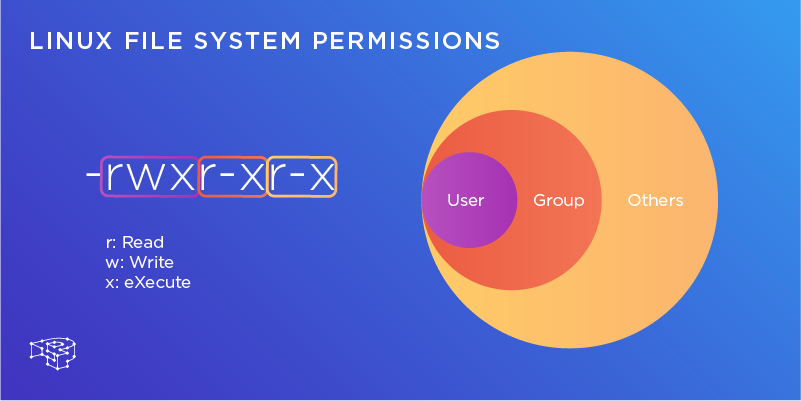
Deciphering Linux File System Permissions Pressidium Managed Wordpress Hosting
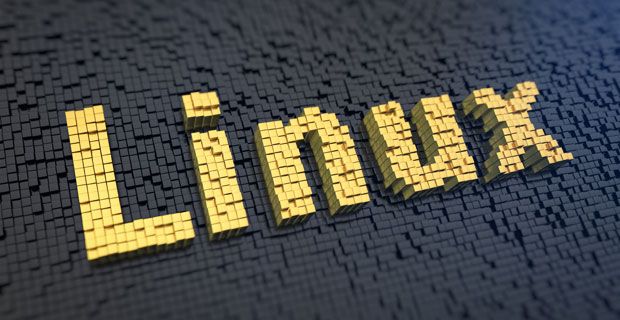
Chmod Command In Linux File Permissions

Chmod 777 What Does It Really Mean Make Tech Easier

Linux Terminal File Permissions Chmod Chown And Chgrp Youtube

Chmod All Directories Permissions Only And Omit Files Recursively On Linux Howto Walking In Light With Christ Faith Computing Diary Walking In Light With Christ Faith Computing Diary

Linux Permissions An Introduction To Chmod Enable Sysadmin

How To Change Directory Permissions In Linux Pluralsight

Chmod 777 What Does It Really Mean Make Tech Easier

Chmod Command In Linux File Permissions Designlinux
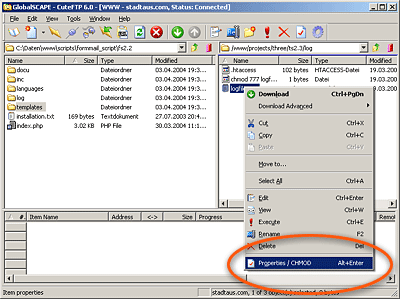
Chmod Ftp File Permissions Stadtaus Com
Q Tbn 3aand9gcs J72hjomdluhqe6xjivy M6yrjmkqx9x3z3ps Rpnb8by3w7z Usqp Cau

Chmod Archives Yet Another Linux Blog

How To Use The Chmod Command On Linux

Linux File Permissions Complete Guide Devconnected

Chmod Chown Wsl Improvements Windows Command Line

Linux File Permission Change By Chmod Command In Linux Guide For Beginners

Linux File System Nevigation Filing System Reading Writing System

An Introduction To Linux File Permissions Boolean World

Change File Permissions Easily With Online Chmod Calculator By Chmodcalcu Issuu
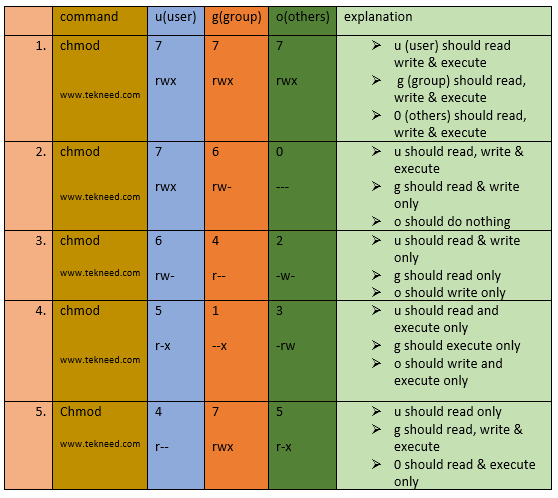
How To Set And Manage File Permission In Linux Part 1

What Does Chmod 777 Mean Linuxize

Chmod 777 In Terminal The Command To Make All Changes Affect Every File And Folder Ask Ubuntu

What Is Chmod How To Use Chmod For Wordpress File Permissions

Modify File Permissions With Chmod Linode

Permissions In Linux Geeksforgeeks

Linux Chmod Example Linux Hint

Understanding File Permissions

Permissions In Linux Geeksforgeeks

Chmod Options Permissions Files Linux Pocket Guide Book

Chmod Wikipedia
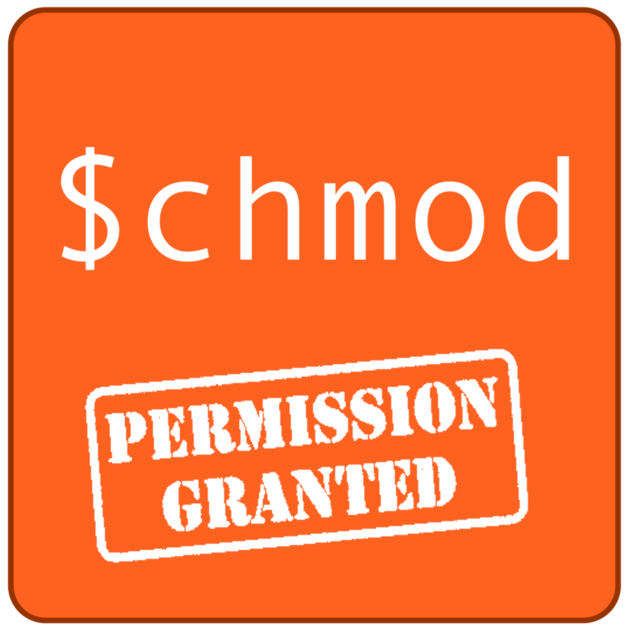
Changing File Permissions In Linux The Chmod Command By Saswat Subhajyoti Mallick Medium

Chmod Recursive Change Permissions Recursively On Files Folders

Pin By Dr Stefan Gruenwald On Cheatsheets Computer Science Programming Linux Operating System Learn Javascript

Unix Permissions

How Do Linux File Permissions Work

Understanding Linux File Permissions With Chmod Umask Chown And Chgrp Liquidon Net

Chmod Umask Stat Fileperms And File Permissions
File Permissions Chmod Page 2 Linux Org

Linux Chmod Command Linuxfordevices
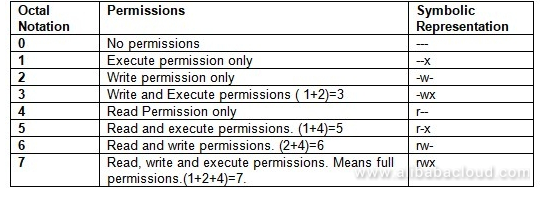
How To Use Linux File Permissions And Ownership On Alibaba Cloud Ecs Dzone Open Source

Unix File Permissions Computer Science

Linux Commands 5 File Permission Chmod Youtube
Q Tbn 3aand9gcq1nsq3kxri7ryrifobs2rfobawbv4hezfw9 Ldf4feblahyn09 Usqp Cau
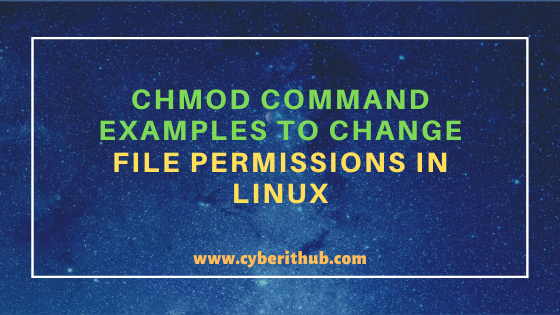
11 Popular Unix Linux Chmod Command Examples To Change File Permissions Cyberithub

Chmod Cheatsheet Linux

Learning The Shell Lesson 9 Permissions

Understand Linux File Permissions Using Chmod And Chown Commands Programming Tips For Versatile Coders

How Did The Number 777 In Chmod 777 Come Out Under Linux Laptrinhx

Understanding Unix Permissions And File Types Unix Linux Stack Exchange

Chmod Command In Linux File Permissions Linuxize
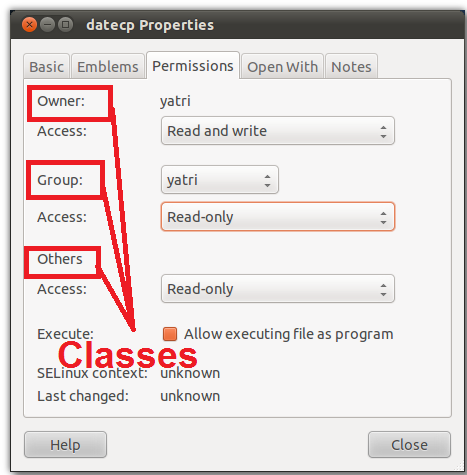
What Is Chmod 777

File Security
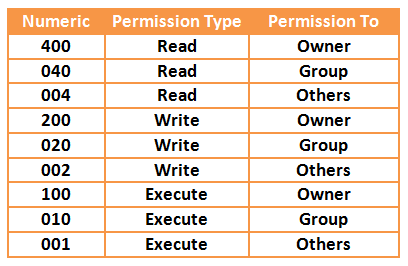
Your Own Linux Chmod Basics Of Files Directories Permissions And Use Of Chmod

What Is Chmod 777 How To Change File Permissions For Linux Tech Ninja Pro

How To Use The Chmod Command On Linux
Q Tbn 3aand9gcsacd7mr Ecztzl Lq8wap9enfi2vj2xlffbqx6amvc25tn3 R6 Usqp Cau

Understanding Linux Permissions And Chmod Usage

Csc128 Permissions And Links Chmod And Ls

How To Change Directory Permissions In Linux Pluralsight

How To Copy File Permissions And Ownership To Another File In Linux
Q Tbn 3aand9gcr2lfpzbutqythmvbwafnxvyggqfj7hnw6fhh Kcozkk8m5 V7o Usqp Cau

Linux File Permissions For Beginners

Linux File Permissions Chmod Umask Tutonics

Understanding Basic File Permissions And Ownership In Linux The Geek Diary

How Do Linux File Permissions Work

Linux Unix Permissions And Attributes Linuxsecrets
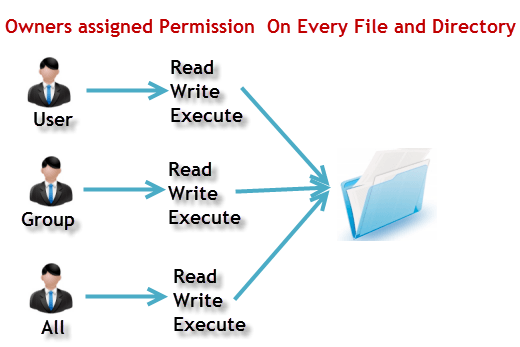
File Permissions In Linux Unix With Example

Understanding Linux Permissions And Chmod Usage

Introduction To Linux File Permissions Attributes Chmod Globo Tech

How To Use Chmod Command In Linux Explained With Examples

Unix Linux Os X File Permissions

Linux Chmod Command Tutorial With Examples To Change Permission Of Files And Folders Poftut
.png)
File Permissions In Linux Unix With Example

08 Unix Linux Shell File Directories Permission Chmod Command Youtube

Linux File Permissions And Chmod Doug Vitale Tech Blog

Linux File Permissions Tutorial For Beginners
Linux Chmod Tips

Understanding File Permissions And Access Rights In Linux Linux Stall



